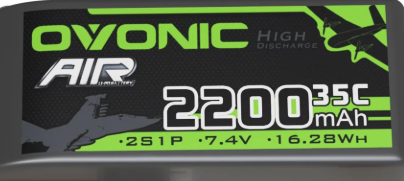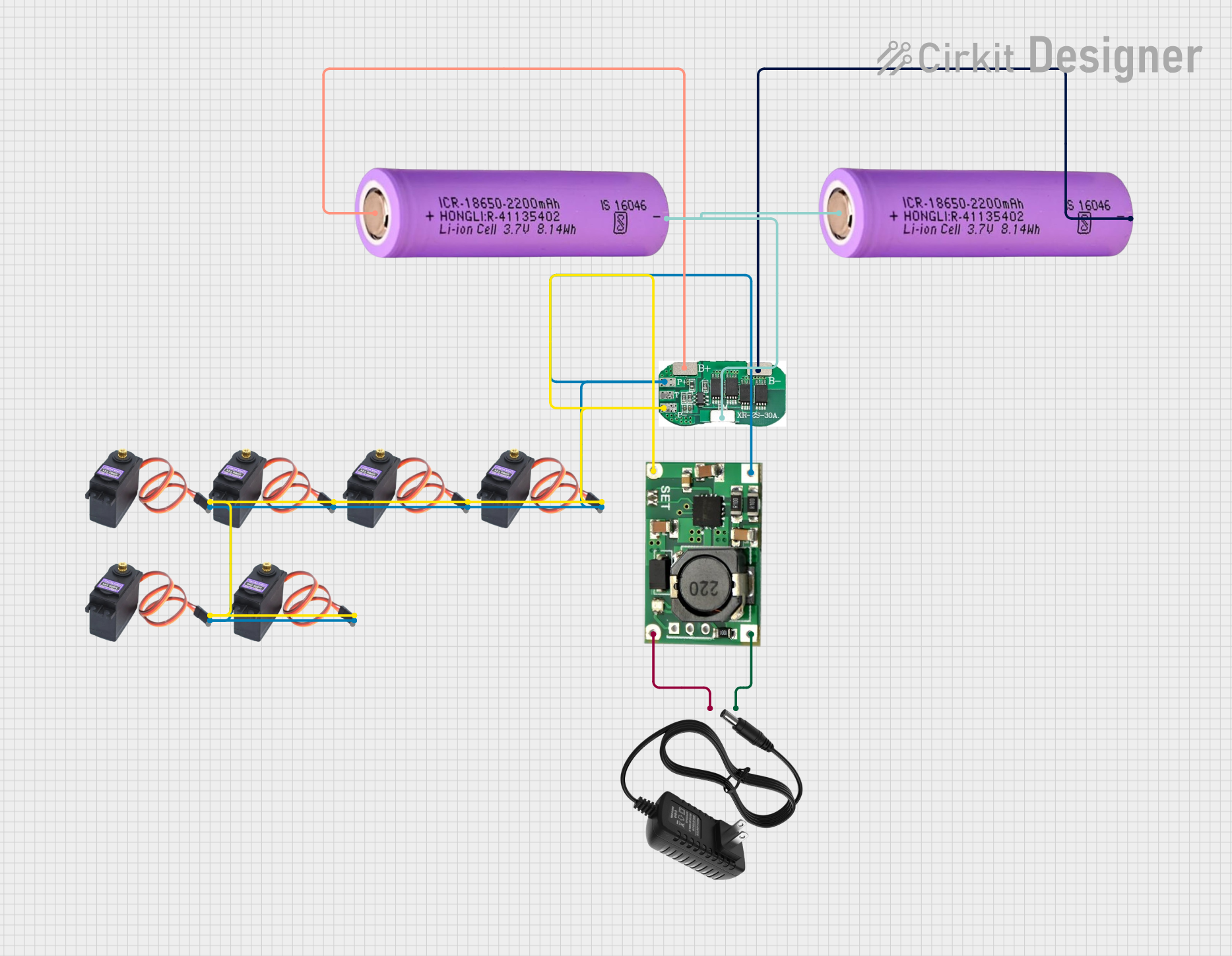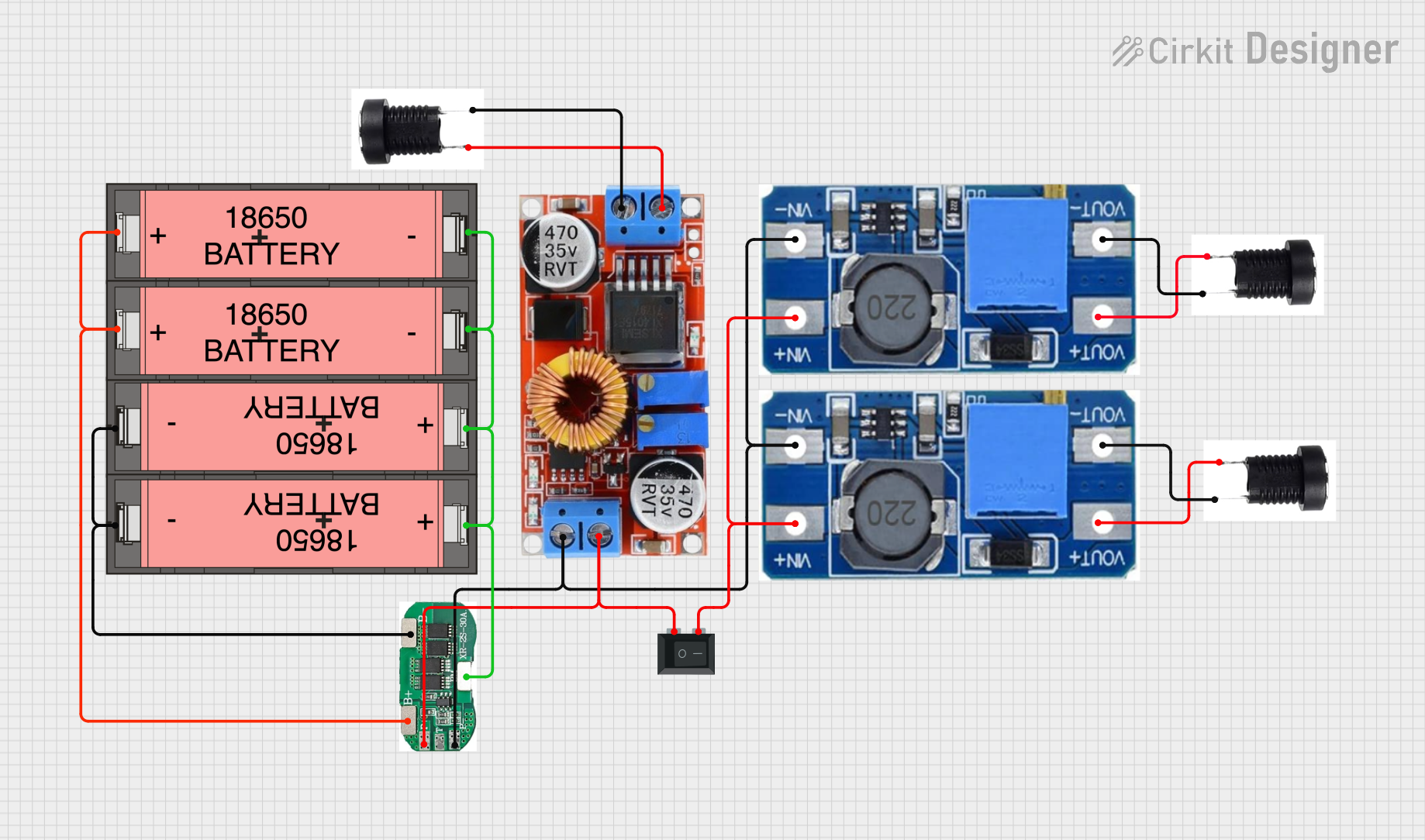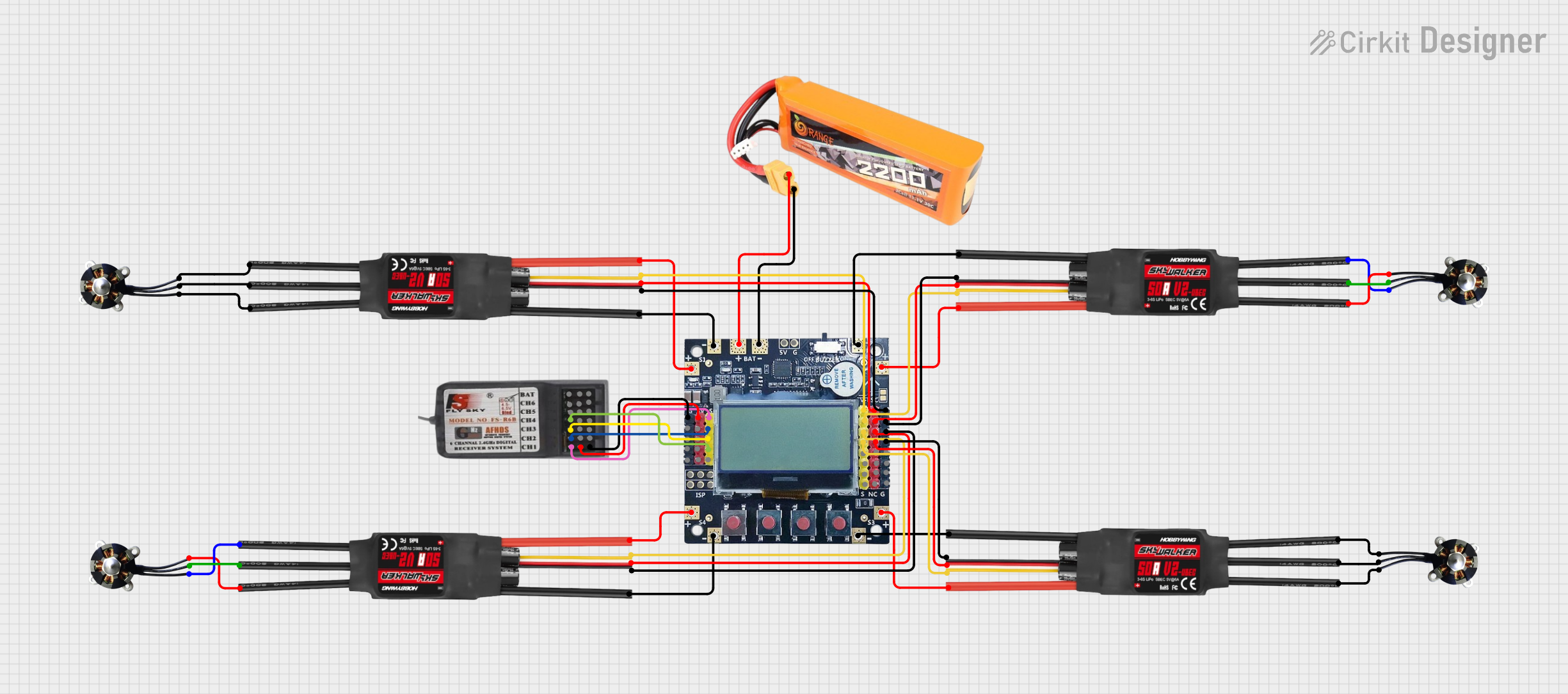
How to Use 2S LiPO Battery 2200mAh (35C): Examples, Pinouts, and Specs

 Design with 2S LiPO Battery 2200mAh (35C) in Cirkit Designer
Design with 2S LiPO Battery 2200mAh (35C) in Cirkit DesignerIntroduction
The 2S LiPO Battery 2200mAh (35C), manufactured by OVONIC (Part ID: OVONIC Air), is a high-performance lithium polymer battery designed for demanding applications. With a nominal voltage of 7.4V, a capacity of 2200mAh, and a discharge rate of 35C, this battery is ideal for powering remote-controlled (RC) vehicles, drones, and other high-drain devices. Its lightweight and compact design make it a popular choice for hobbyists and professionals alike.
Explore Projects Built with 2S LiPO Battery 2200mAh (35C)

 Open Project in Cirkit Designer
Open Project in Cirkit Designer
 Open Project in Cirkit Designer
Open Project in Cirkit Designer
 Open Project in Cirkit Designer
Open Project in Cirkit Designer
 Open Project in Cirkit Designer
Open Project in Cirkit DesignerExplore Projects Built with 2S LiPO Battery 2200mAh (35C)

 Open Project in Cirkit Designer
Open Project in Cirkit Designer
 Open Project in Cirkit Designer
Open Project in Cirkit Designer
 Open Project in Cirkit Designer
Open Project in Cirkit Designer
 Open Project in Cirkit Designer
Open Project in Cirkit DesignerCommon Applications
- RC cars, boats, and airplanes
- Drones and quadcopters
- Robotics and DIY electronics projects
- Portable power systems for high-drain devices
Technical Specifications
Below are the key technical details of the 2S LiPO Battery 2200mAh (35C):
| Parameter | Specification |
|---|---|
| Manufacturer | OVONIC |
| Part ID | OVONIC Air |
| Battery Type | Lithium Polymer (LiPO) |
| Nominal Voltage | 7.4V (2S configuration) |
| Capacity | 2200mAh |
| Discharge Rate | 35C (77A continuous discharge) |
| Maximum Burst Rate | 70C (154A burst discharge) |
| Dimensions | 106mm x 34mm x 17mm |
| Weight | ~120g |
| Connector Type | XT60 (main power) |
| Balance Connector | JST-XH (2S balance lead) |
| Operating Temperature | -20°C to 60°C |
| Storage Temperature | 0°C to 45°C |
Pin Configuration
The battery has two connectors: the XT60 connector for power delivery and the JST-XH balance connector for charging and cell balancing. The pinout for the JST-XH connector is as follows:
| Pin | Description |
|---|---|
| Pin 1 | Cell 1 negative (-) |
| Pin 2 | Cell 1 positive (+) |
| Pin 3 | Cell 2 positive (+) |
Usage Instructions
How to Use the Battery in a Circuit
Connecting the Battery:
- Use the XT60 connector to connect the battery to your device's power input.
- Ensure the polarity matches the device's power input to avoid damage.
- For charging, connect the JST-XH balance connector to a compatible LiPO balance charger.
Charging the Battery:
- Use a LiPO balance charger that supports 2S (7.4V) batteries.
- Set the charging current to a maximum of 2.2A (1C rate) for safe charging.
- Always monitor the charging process and avoid overcharging.
Discharging the Battery:
- Ensure the connected device does not exceed the continuous discharge rate of 77A.
- Avoid discharging the battery below 3.0V per cell (6.0V total) to prevent damage.
Important Considerations and Best Practices
- Storage: Store the battery at a voltage of 3.7V to 3.85V per cell (7.4V to 7.7V total) for long-term storage.
- Safety: Never puncture, short-circuit, or expose the battery to fire or water.
- Inspection: Regularly inspect the battery for swelling, damage, or loose connectors.
- Balancing: Use the balance connector during charging to ensure both cells are charged evenly.
Example: Using with an Arduino UNO
If you are powering an Arduino UNO with this battery, you can use a voltage regulator (e.g., LM7805) to step down the 7.4V to 5V. Below is an example circuit and code:
Circuit Setup
- Connect the XT60 connector to the input of the voltage regulator.
- Connect the output of the voltage regulator to the Arduino UNO's 5V and GND pins.
Example Code
// Example code to blink an LED using Arduino UNO powered by a 2S LiPO battery
const int ledPin = 13; // Pin connected to the onboard LED
void setup() {
pinMode(ledPin, OUTPUT); // Set the LED pin as an output
}
void loop() {
digitalWrite(ledPin, HIGH); // Turn the LED on
delay(1000); // Wait for 1 second
digitalWrite(ledPin, LOW); // Turn the LED off
delay(1000); // Wait for 1 second
}
Troubleshooting and FAQs
Common Issues and Solutions
Battery Not Charging:
- Cause: Incorrect charger settings or damaged balance connector.
- Solution: Verify the charger is set to 2S (7.4V) mode and inspect the connectors.
Swollen Battery:
- Cause: Overcharging, over-discharging, or physical damage.
- Solution: Discontinue use immediately and dispose of the battery safely.
Device Shuts Down Prematurely:
- Cause: Battery voltage dropped below the device's cutoff voltage.
- Solution: Recharge the battery and avoid discharging below 3.0V per cell.
Uneven Cell Voltages:
- Cause: Cells are out of balance due to improper charging.
- Solution: Use a balance charger to equalize the cell voltages.
FAQs
Q1: Can I use this battery for a 3S device?
A1: No, this is a 2S battery with a nominal voltage of 7.4V. Using it in a 3S (11.1V) device may result in insufficient power or damage.
Q2: How do I know when the battery is fully charged?
A2: A fully charged 2S LiPO battery will have a voltage of 8.4V (4.2V per cell). Most chargers will indicate when charging is complete.
Q3: What is the maximum safe discharge current?
A3: The maximum continuous discharge current is 77A (35C), and the maximum burst discharge current is 154A (70C).
Q4: Can I use this battery in cold weather?
A4: Yes, but performance may decrease in temperatures below -20°C. Pre-warm the battery for optimal performance.
By following these guidelines, you can safely and effectively use the 2S LiPO Battery 2200mAh (35C) in your projects.